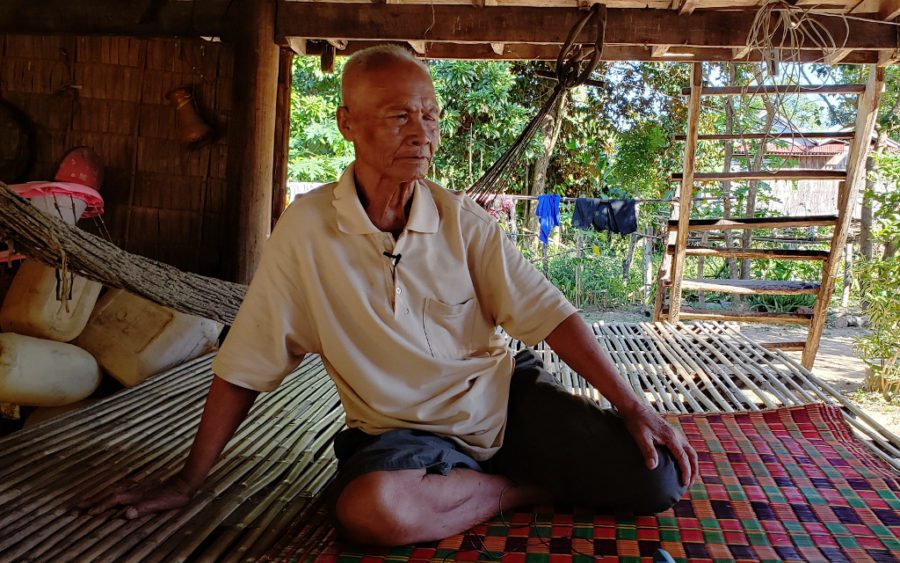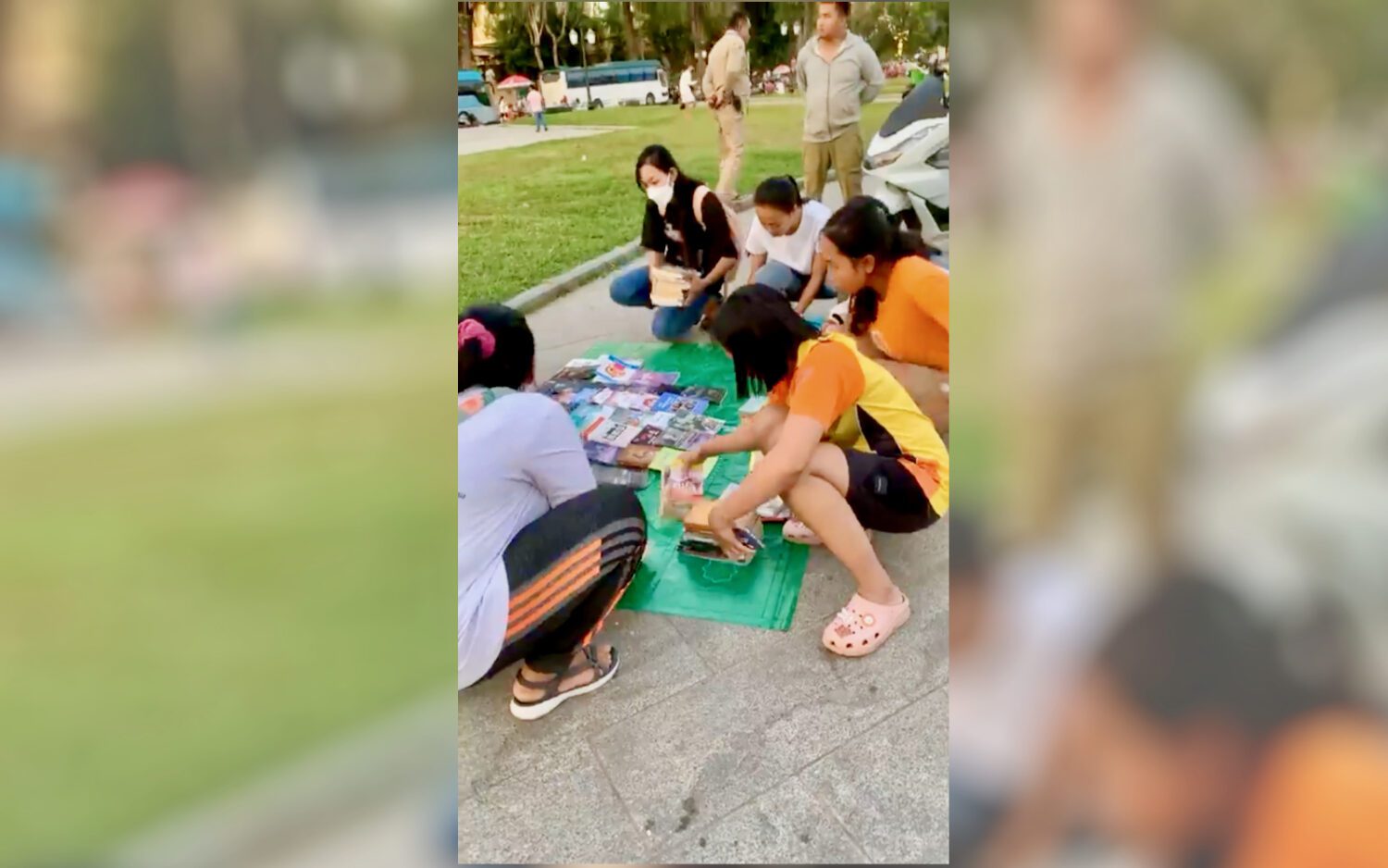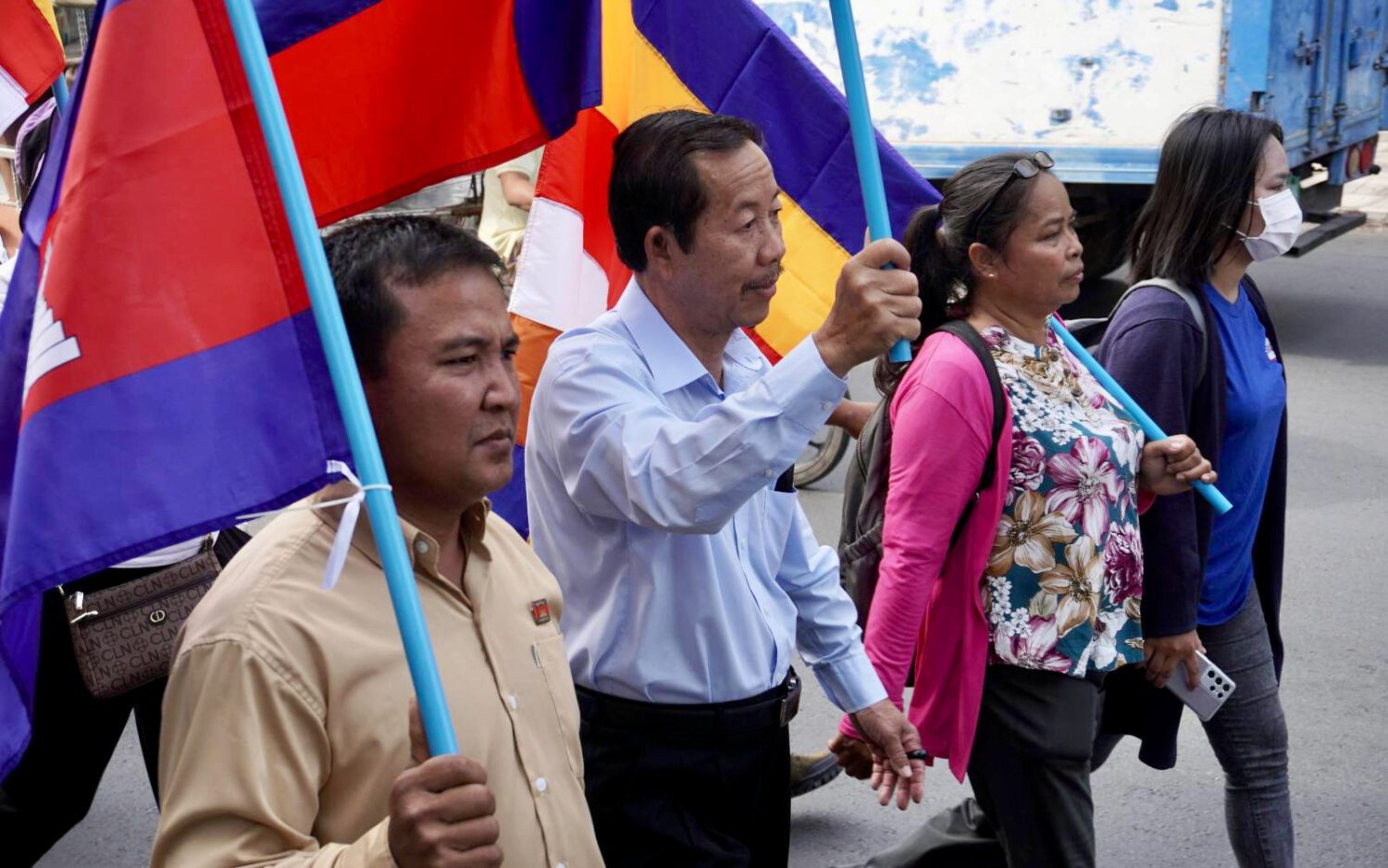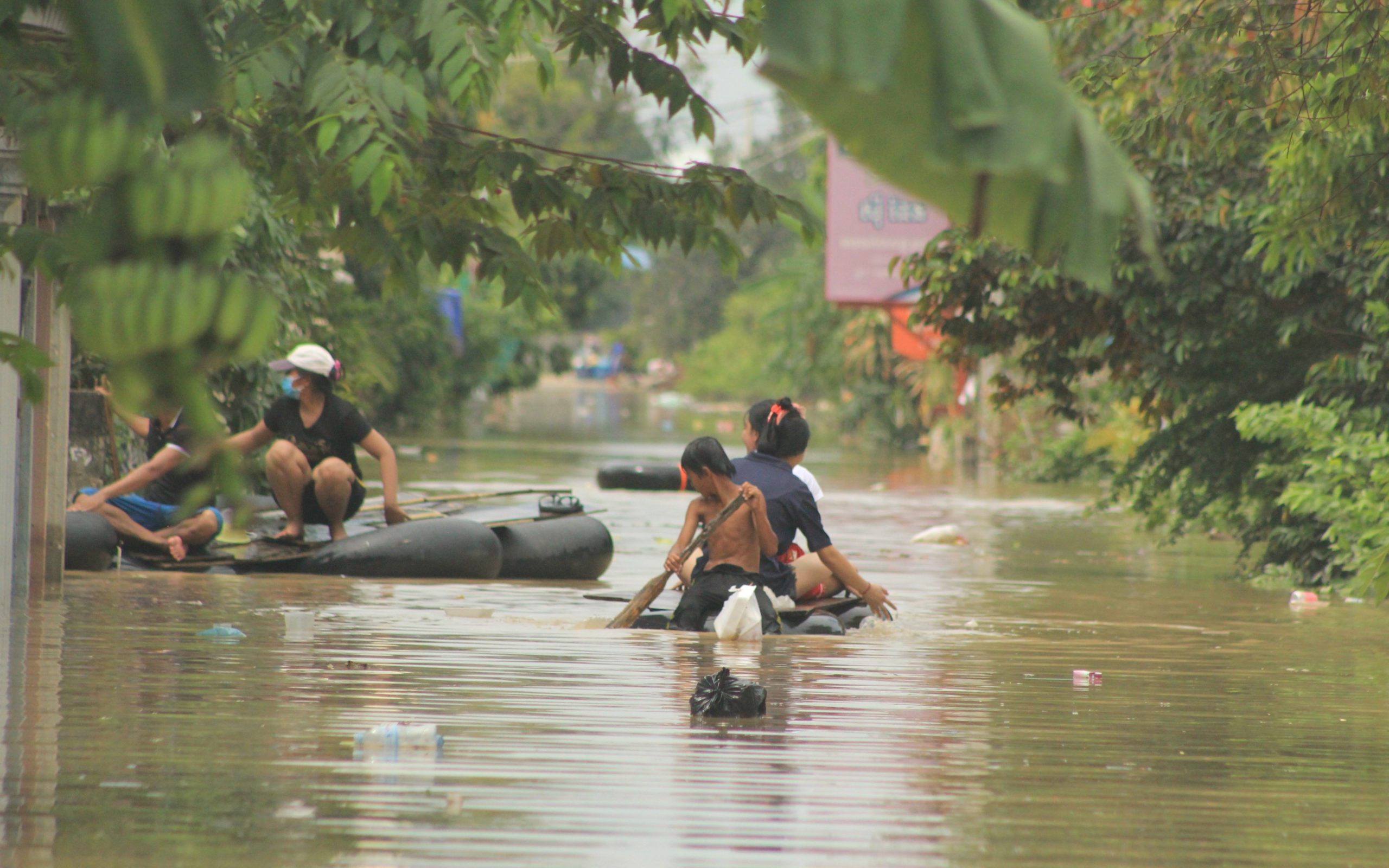ROLEA BA’IER DISTRICT, Kampong Chhnang — After surviving the Khmer Rouge regime by literally burying the tools of his trade underground, Om Yom, one among a few remaining old masters of the Cambodian martial art l’bokator, spends his time teaching his skills to the younger generation, dreaming to develop the sport to the level of other countries’ martial arts.
L’bokator — also written as bokator — is the oldest martial art that’s still practiced in Cambodia, and is an important part of the past and present of Kampong Chhnang province, which is known not just for artwork like pottery but for its strong military tradition.
The ancient martial art combines techniques like throwing elbows, knees and punches as well as weaponry. This kind of martial art was used for combat in past wars, in addition to being a source of entertainment and a spiritual practice.
Despite its militaristic roots, the presence of l’bokator in Cambodia dwindled as the country weathered periods of war and social upheaval. Under the Khmer Rouge regime, where artists and athletes were targeted and killed because they were considered part of the country’s urban elite, l’bokator almost completely disappeared.
Under Yom’s instruction, students demonstrate their skills learned at a l’bokator club in Kampong Chhnang’s provincial capital, chanting and calling at the group leader’s command. In an exhibitional sparring match, a teenage girl takes on two male peers, emulating the moves that masters would have used in fatal fights in the past. Starting with combat poles, the girl disarms her peers by sideswiping with her pole, dodging and making fast grabs, and when the boys finally take her pole, they switch to barehanded jabs and high kicks.
Yom is one of a small number of people who are fighting to preserve l’bokator traditions after surviving the genocidal regime. Through his and other practitioners’ passion, the martial art is slowly regaining its popularity — with some of its ritualistic and violent traditions transformed as they are passed onto younger generations.
Originally from Kampong Chhnang province, Yom, 67, has spent the past 10 years sharing l’bokator to young fighters, with the hope that the martial art will be recognized and listed as intangible heritage by Unesco, a long-sought recognition of the sport’s foundational role in Southeast Asian martial arts.
“My goal is to make this martial art known among people, both Khmer or foreigner,” Yom says.
He says he has been training students for free since 1993, starting by teaching peers in his community before quitting his job casting molds for pagoda statues and other structures to open a club in Kampong Chhnang city in 2004. The club was formally registered in 2011.
Beyond training students, Yom says he’s worked with other l’bokator advocates, collecting information from masters older than him and sharing what he can with Phnom Penh and international stakeholders interested in preserving the martial art.
“We have struggled these last 10 years to tell [everyone] that this is ours,” Yom says. “We need to write down [the techniques]. We need to gather and not use only what belongs to me, because we have plenty [of information out there].”
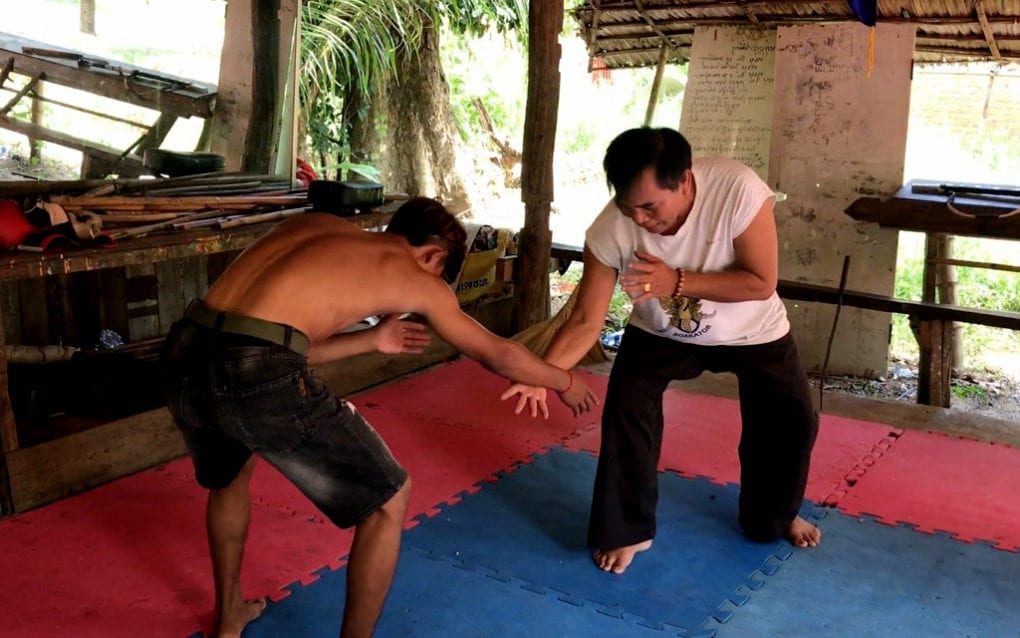
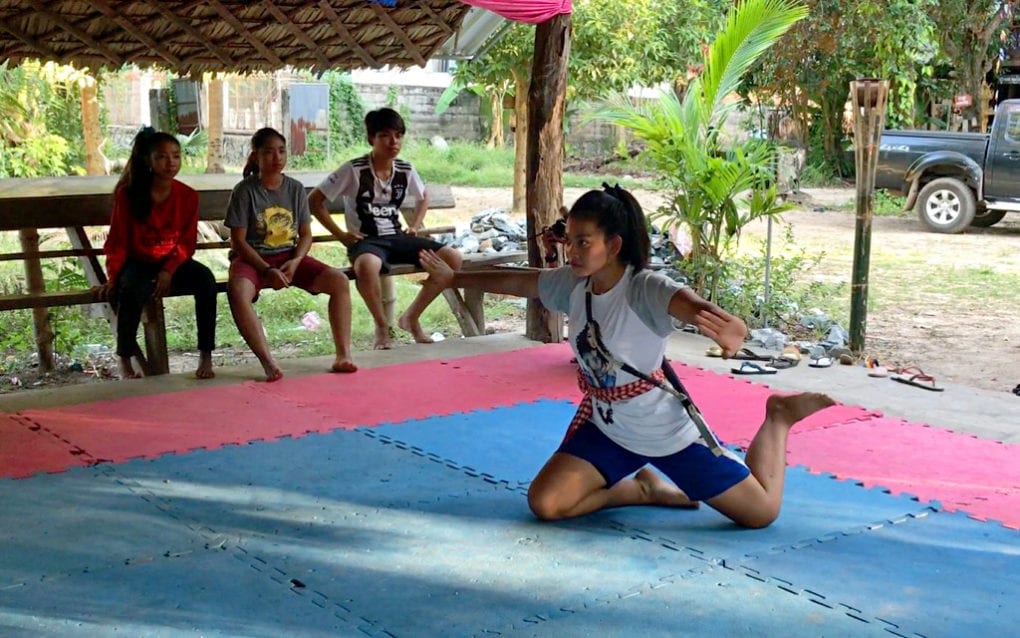
Bound by L’bokator History
The ancient city of Longvek, now in Kampong Chhnang province’s Kampong Tralach district, was known as a gathering point for all scholars, martial art experts and other knowledgeable people, and it served as the heart of the country’s military from the end of the Ankgorian era through the present.
Kraing Leav, Pungro and Svay Chrum communes in the province’s Rolea Ba’ier district are areas that were known for widespread martial arts training, and the national military still trains a large number of its forces there, Yom says.
Yom, a Kampong Chhnang native, says his grandfather passed on l’bokator to his father, bestowing a golden badge tied to a rope as a symbol of mastery. Because l’bokator was so important to his forefathers, Yom says he feels called to revive and preserve the tradition.
“I have a family line of martial arts trainers in my father and my grandfather, so I think we should do everything” to conserve and develop the sport, says Yom.
He started training in l’bokator with his father when he was 7 or 8 years old. In his early childhood under the Lon Nol regime, the martial art was not allowed to be practiced freely because it was associated with opposing military forces, so he studied in secret.
“During that time, they divided [Cambodia] into two areas, the Lon Nol and Khmer Rouge liberated areas,” Yom explains. “If we trained, [one] side said we created a movement and were training to topple its side, while the other side saw that we were training to serve that [opposing] side.”
The past political beliefs about l’bokator, compounded by the Khmer Rouge-era murder of masters, have made it challenging for Yom to get information from practitioners in their 70s and older, as they sometimes still feel afraid to reveal all that they know.
“[They] have been influenced from that time and they still think of that time when they witnessed the killings,” Yom says.
A few kilometers from the provincial town, another master, Ke Som On, 80, from Svay Chrum commune, says he finally retired from practicing l’bokator this year, as he’s had some trouble with his lungs — and his family pushed him to stop.
He had only started about five years to retrain the skills that had been embedded in his mind since he was 8 years old.
Like his younger peer, Som On’s family passed down the martial art. He was taught by an older uncle who was a member of the Khmer Issarak movement that fought for independence from the French colonial regime.
At that time, government soldiers sought to arrest members of Khmer Issarak, so he and other practitioners in the province would train behind his home at sundown to avoid suspicion.
“It was a secret and I could not train like today,” Som On says, referring to how modern l’bokator fighters can train in the open. “During that time, they used both [unarmed] martial arts and weapons.”
Som On says he was training full-time in l’bokator and general wrestling by the time he was 20 years old, but shortly after, the Khmer Rouge took control of the country, and he hid his background in l’bokator. During the regime, cadre members heard from his relatives that he had studied l’bokator and began asking about his ability. He would deny his knowledge out of fear that they would kill him, but eventually he began showing a few moves to soldiers who just wanted to see them.
“I said I did not know anything, even my [ability to] write, because it would be a problem if the Khmer Rouge knew,” Som On says.
Som On says he did not resume l’bokator even after the Khmer Rouge fell, but would occasionally join small wrestling competitions during national holidays or festivals.
Som On did not want to train his children or other students in the martial art. But in the past five years he became involved in l’bokator again after Yom, a neighbor, constantly urged him to share his skills.
Though he was initially afraid to demonstrate his ability, Som On says he’s happy to see more people interested in l’bokator again. As a reporter is about to depart Som On’s home, the retired master grabs his hand and locks him in a grasp, showing his mastery hasn’t faded with age.
“Before I felt worried [for l’bokator’s future] because after Pol Pot, I never heard about l’bokator,” he says.
Modernizing a ‘Treasure’
Vath Chamroeun, secretary-general of the Olympic Committee of Cambodia, says the nation’s sports agency has worked with other older masters for years to find other remaining masters and compile their knowledge into martial arts books.
“Normally, what we are digging up again, it needs resources, willingness, and needs to work together,” says Chamroeun.
Through conversations with older masters and meetups in the capital, the country has uncovered l’bokator practitioners who may have been too hesitant to share their abilities.
When Som On first began training decades ago, there was a young girl, the granddaughter of a master, who would watch and sometimes participate in l’bokator training sessions.
Now 80 years old, that girl, Sao Von, still recalls how she would watch her grandfather practice l’bokator and try to emulate the moves behind her house. When she turned 15, her grandfather invited her to study alongside the guys, though many in the village would criticize her for training, she says.
Von says she can no longer wield a baton or strike as she used to. She says her memory is fading as well, and her thoughts drift during the interview.
Von’s daughter, Khat So Ny, 52, says she knew nothing of her mother’s skill until l’bokator advocates visited her home and asked Von to join an event for elder masters in Phnom Penh.
“My mother never wanted to pass it on, because [l’bokator’s history] is complicated,” she says.
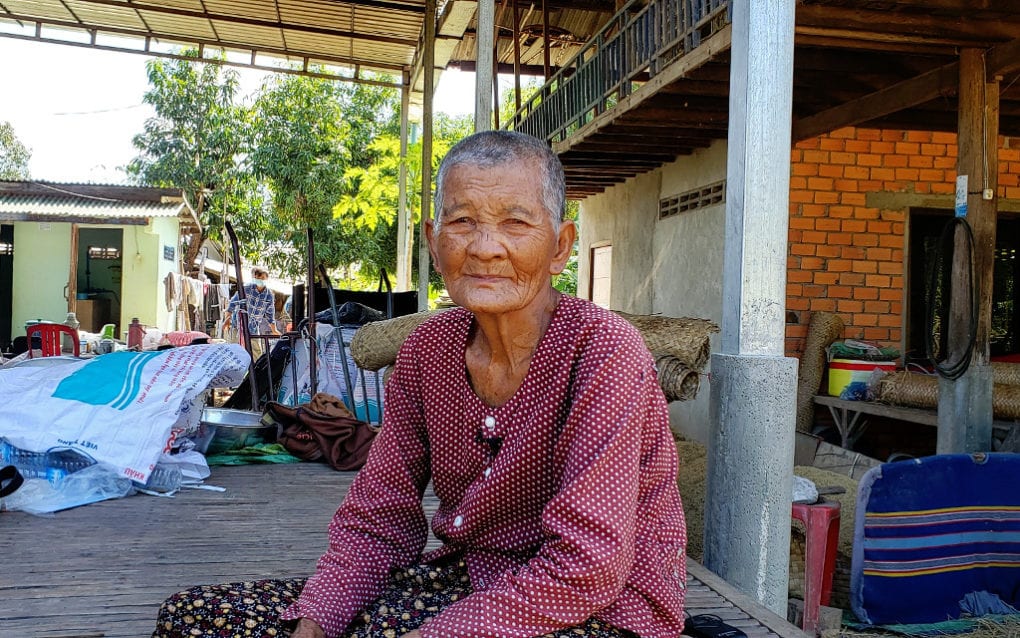
Chamroeun says that as they’re collecting knowledge of the older traditions, the committee is also modernizing the sport — creating a management structure, starting yearly competitions, and setting up proper training regimes that follow official rules. And since 2015, select techniques including weapons tactics have been incorporated into Cambodia’s military training programs.
Chamroeun argues that conserving the sport’s traditions cannot be separated from the development and is critical to showing the international importance of the martial art. The sport is now recognized by the World Martial Arts Association and will be included in the 2023 Southeast Asia Games, but Unesco intangible heritage status has still eluded the sport.
“This is the treasure of Cambodian people, of our ancestors, so we have to [preserve l’bokator’s traditions],” he said. “We have to do it willingly.”
Part of that includes taming modern l’bokator from the kind of fierce and dangerous martial arts that was used by soldiers in ancient wars and warriors in fatal combat, Chamroeun says.
Traditionally, practicing l’bokator requires training in the techniques as well as spiritual energy and strategy, but the Olympic committee prohibits some moves in competition in order to keep it fair to competitors and prevent excessive violence.
Though trainers and practitioners can choose to practice spiritual awareness and ancestral worship as part of l’bokator, as they did in previous eras, Chamroeun says it should not be a requirement in the modern fighting ring.
“Modern martial arts does not think about these things,” Chamroeun says of l’bokator’s spiritual aspects. “They think about training for good fitness, being smart and having proper training.”
New Successors
As his students start to perform well in the martial art, Yom says he’s eager to promote their abilities, bringing them to competitions and festivals. He says he sacrifices a lot of his time and energy, to grow both general interest in the sport and Kampong Chhnang province’s unique affinity for l’bokator.
Fighters from Kampong Chhnang are known for their grabs and takedowns, Yom explains, and their competitors are probably just behind those from Siem Reap province, where many fighters have trained in recent years.
“We want to restore [the tradition] because Kampong Chhnang used to be covered by martial arts trainers, so why not in this era?” he asks. “Now, I pass [my skills] onto the youngsters because I want it to continue existing.”
Tho Srey Nich, 17, a student at Yom’s club, says she has trained in l’bokator for four years, though her parents were initially hesitant about her interest in the sport.
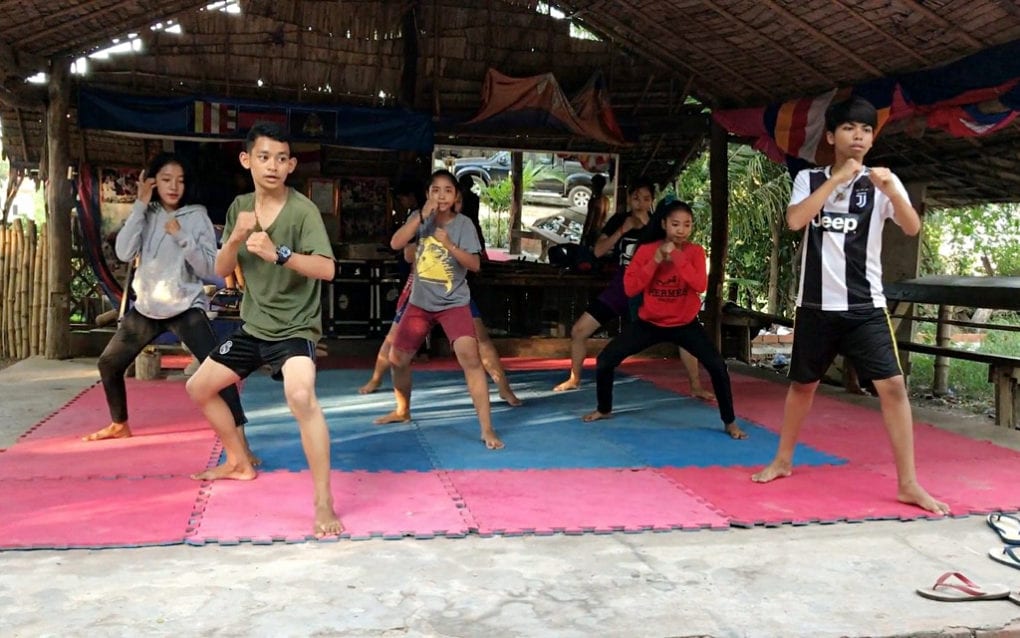
“I saw the uniforms of l’bokator [fighters], and I loved it because the previous generation is really amazing,” she says.
When she began practicing l’bokator, her family, friends and neighbors saw it as a man’s sport, and discouraged her from training.
“Whenever they talk [about me], I don’t care, because the important thing is that I love things that are left behind by our ancestors,” she says.
The training can be challenging, Srey Nich says, but l’bokator has taught her to act with patience and think before taking actions. She says she’s shed some of her stubbornness, but she still trains with determination.
“We are the successors of the ancestors, so we don’t have to be soft,” she says. “We have to try our best.”
Yong Tak, 21, has trained for 10 years and become one of the top fighters at the Kampong Chhnang club. But his parents also did not want him to pursue l’bokator at first, despite both his father and mother having trained in the martial art when they were young.
“I had heard older people talking about the strength from l’bokator, but I had never known it. I tried it [10 years ago] and have trained until now,” Tak says. He found a deep passion for the sport and practices full-time, he says.
Through years of training, the young fighter says he’s gained self-discipline and even begun worshipping ancestors to ask for strength before practice, as l’bokator fighters of the past had. Tak says he still has one opponent in Siem Reap province he has yet to beat, but he has studied the martial art, and his opponent’s skills, very closely in order to challenge him again.
“I already prepared and looked at my opponent’s weak points and his training,” he says. “If I have the chance [to face him], I will win against him.”
In the pupils’ final demonstration as reporters prepare to leave, Yom watches as Tak performs a backflip while holding knives in both hands. It was not a move the old master had taught him.
“I can’t move like him,” Yom says, taking satisfaction in the pupil’s creativity, the art’s living evolution.


